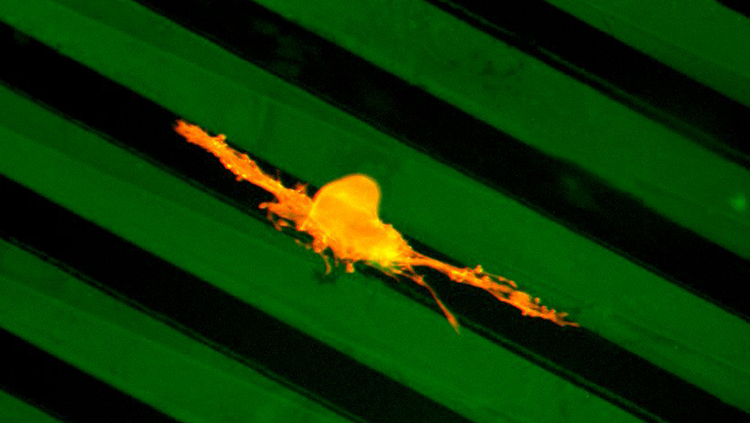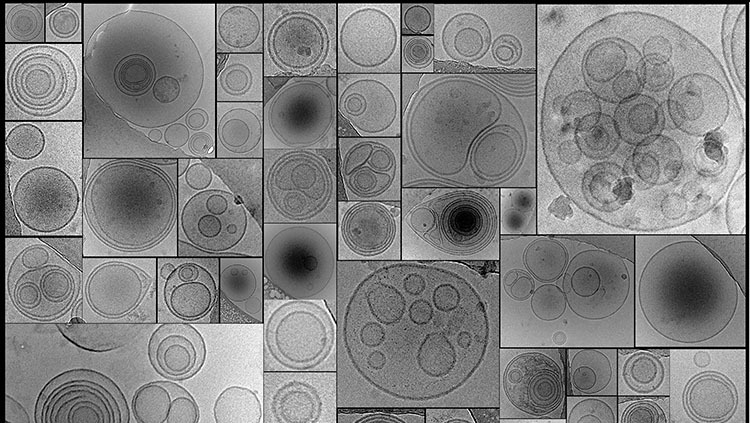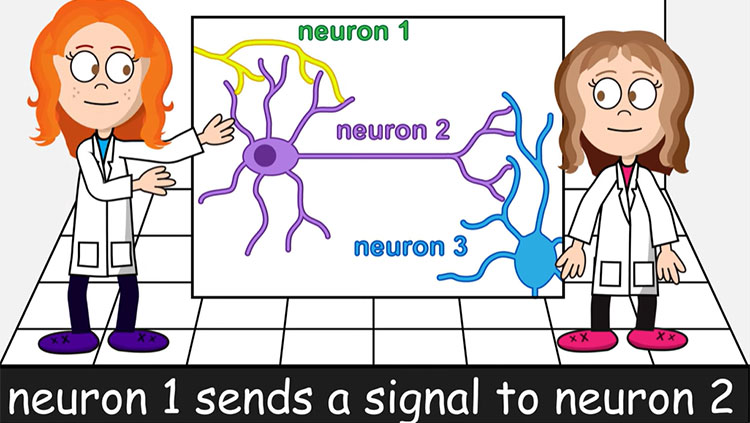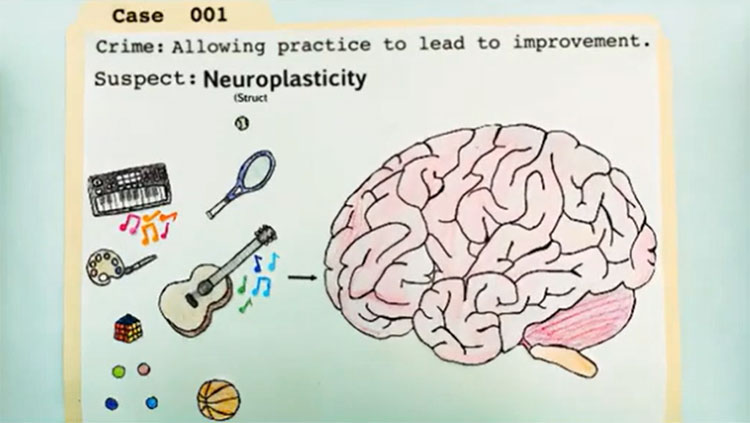The Wiring Behind Your Reflexes
- Published7 Aug 2018
- Reviewed7 Aug 2018
- Author Charlie Wood
- Source BrainFacts/SfN

Has a doctor ever tested your reflexes with a light whack of your knee? When that little red hammer taps your knee, your leg pops up almost as if it has a mind of its own. That's because — in a sense — it does. Your knee has access to its own bit of grey matter far from your head — your spinal cord.
The neurons that run from your skin to your spinal cord independently handle a range of reflexive reactions, protecting us from immediate threats like unseen thumbtacks to still-hot electric burners. To get the pain signal from your skin to your spine for on-the-spot processing, you need this orange blob of nerves — the dorsal root ganglion.
In this image, the nerve bundle stays strictly in its lane. In a normal petri dish it would sprawl in all directions, but here the green stripes corral it with a repulsive protein — EphrinA5. This protein family serves as a traffic light in the body that helps direct neurons as they grow.
CONTENT PROVIDED BY
BrainFacts/SfN
Also In Cells & Circuits
Trending
Popular articles on BrainFacts.org


















